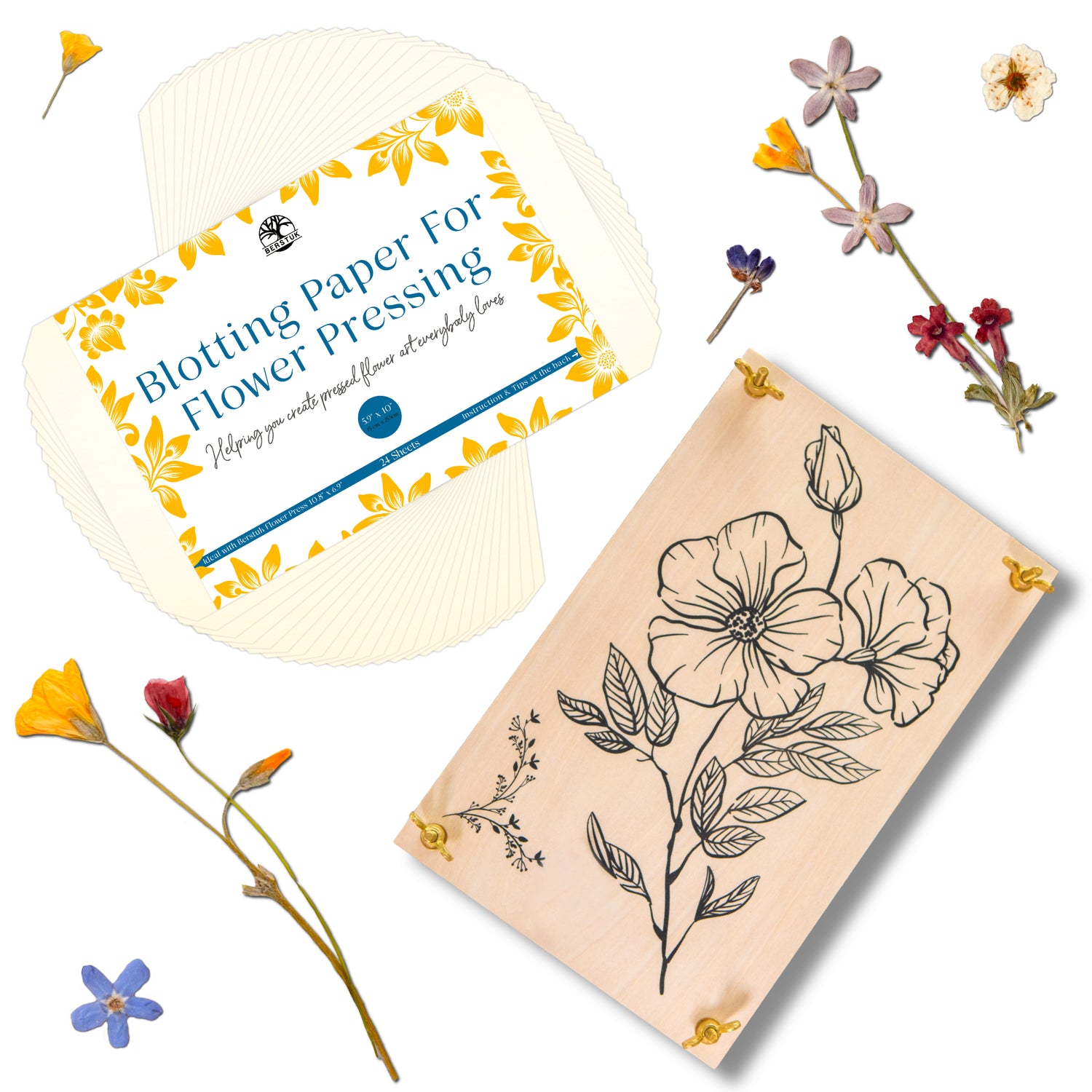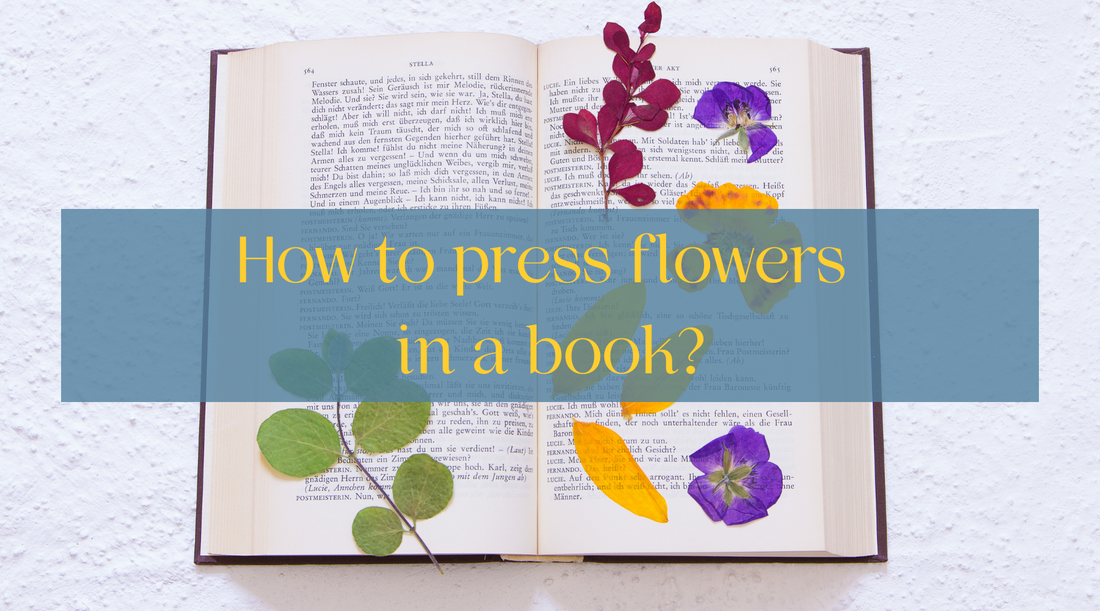Pressing flowers is a great way to preserve their beauty and create unique decorations for your home. One of the most traditional and simple methods for pressing flowers is using a book. Using a book to press flowers is an easy and affordable way to preserve your flowers, and it's perfect for those who want to press a few flowers at a time.
In this article, we will go over the steps for pressing flowers in a book and the materials you will need. We will also discuss the best types of flowers to press in a book and how to avoid common mistakes.
To press flowers in a book, you will need the following materials:
- Freshly picked flowers
- Printing paper or blotting paper
- A heavy book (such as a dictionary or one that you will not need anymore)
- A weight (such as a brick or can of food)
Step 1: Gather your flowers and prepare them for pressing.
Choose flowers that are freshly picked and in good condition. Avoid using flowers that are wilted or have brown edges as they will not press well. Some popular flowers that press well in a book include violets, pansies, and daisies. These flowers have thin petals and are more suited for pressing in a book than thick-petaled flowers like roses.
PS. if you specifically want to preserve a rose, definitely read our article How to press rose petal by petal.
Step 2: Lay out the flowers on a piece of printing paper or ideally blotting paper.
This is to protect your blooms and add extra absorbent sheets to soak up the moisture from the flowers. Gently spread the flowers out so that they do not overlap. It's also good to flatten the blooms with your fingertips.
NB. Here is our article on The best paper to help you press flowers.
Step 3: Cover the flowers with another piece of paper.
So your flowers should be sandwiched between two sheets of paper. Then gently press down.
Step 4: Carefully place the flowers and paper between the pages of a heavy book.
Make sure the book is thick and heavy, as a thin book will not provide enough pressure to press the flowers effectively.
Step 5: Place a weight on top of the book to add extra pressure to the flowers.
This step helps to make sure that all parts of your blooms are in contact with the paper. The moisture gets released from the blooms and is quickly soaked up by the paper.
Step 6: Allow the flowers to press for 2-3 weeks.
During this time, check on the flowers and change the paper if it becomes damp.
You may want to check out our post How long does it take to press flowers?
It's important to note that some flowers will press better than others in a book. Flowers with thin petals, such as pansies and violets, will press better than thick-petaled flowers like roses. If you want to press thick-petaled flowers, it's best to press each petal and layer separately to ensure that all parts of the flower are pressed evenly.
If you're new to pressing flowers, definitely read this The easiest flowers to press using a wooden flower press - For Beginners!
Type of book
Another important thing to note is that some books are better suited for pressing flowers than others. Avoid using books with soft cover as they don't exert enough pressure throughout the whole flower. Also, if your book does not close when you place your blooms inside it, the flower may just be too thick for it and the book too small. So only a part of it will get pressed and the other part will just air dry (then crushed) or get moldy. If that is the case, choose a bigger book (size-wise) or press parts of the flowers separately then re-assemble them together once pressed and ready.
To be honest, the best technique to press thick and whole flowers in a book to ensure great results is by pressing them petal by petal. Consider this method if your flower has more than 2 layers of petals.
Book care
It is also good to be aware that pressing flowers in a book can be risky for the book itself, as the moisture from the flowers can damage the pages. To avoid this, you can place the flowers and paper between wax paper or parchment paper before placing them in the book. But if you don't mind it, feel free to pop your flowers straight into the book (as mentioned before, it's best for small, single-petalled blooms).
Additionally, the ink from the pages of the book can sometimes transfer onto the pressed flowers, which can be a problem if you want to use the flowers for decorative purposes. To avoid this, you can place the flowers and paper between wax paper or parchment paper before placing them in the book. This will act as a barrier between the flowers and the pages of the book, preventing any ink transfer.
Another alternative is to use a clean and unused notebook (that doesn't have any ink) with hard cover, then just put another book on top of it. If, however, you want to jump into flower pressing like a pro and don't want to risk your precious books, then definitely consider using a wooden flower press specifically made for that.
Summary
In conclusion, pressing flowers in a book is a traditional and easy way to preserve their beauty. However, it's important to choose the right type of flowers and the right book to ensure that the flowers press well. Flowers with thin petals, such as pansies and violets, are better suited for pressing in a book than whole thick-petaled flowers like garden roses. Additionally, it's important to protect the flowers from dust and moisture and prevent ink transfer by using wax paper or parchment paper.
Happy flower pressing!
If you found this article interesting and want to read more about flower pressing, check our blog How to press flowers for preservation- Absolute Beginners Guide.
Don't miss out on exclusive flower pressing tips, discounts, and more! Sign up for our mailing list now and join our community of flower enthusiasts who are always one step ahead. Click HERE to perfect your pressed flower art.




